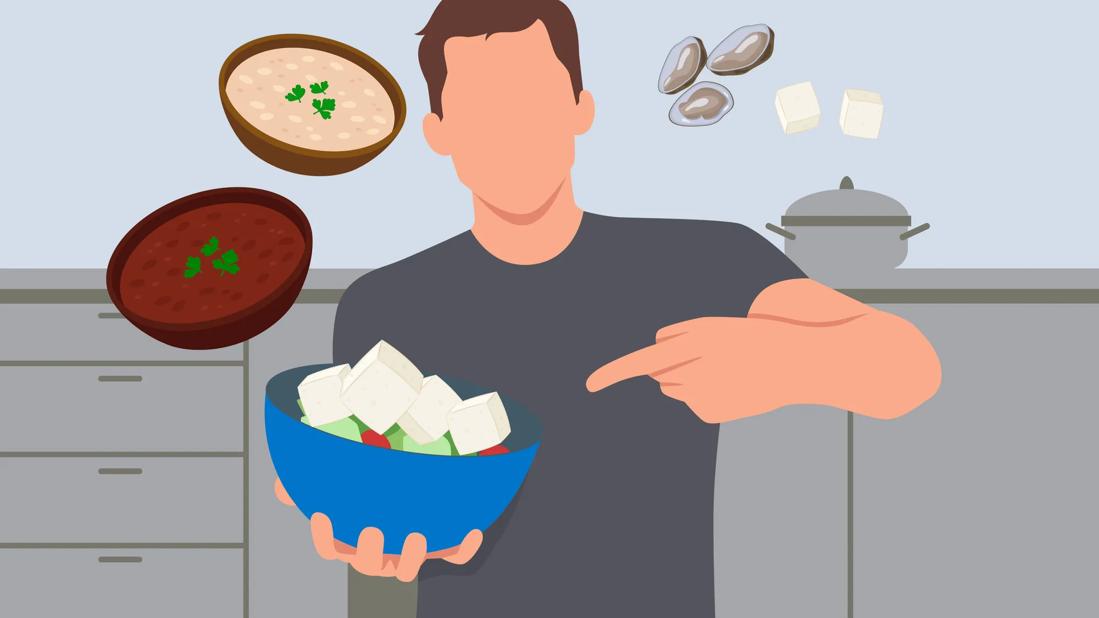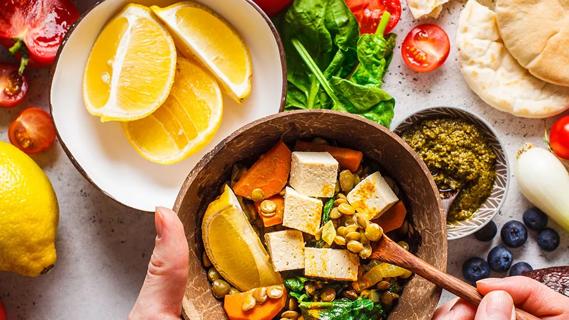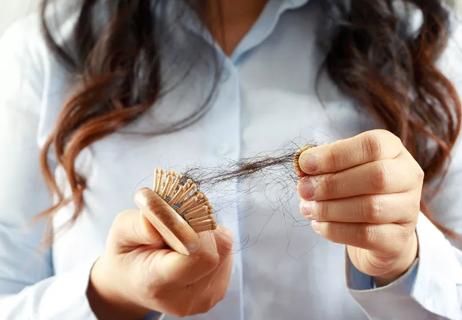The benefits of iron span your whole body, from your blood and your brain to your immune system and more

Iron is an important nutrient in our diets. So critical, in fact, that many foods, from infant formula to breakfast cereals, are commonly fortified with iron to help ensure we get enough of it.
Advertisement
Cleveland Clinic is a non-profit academic medical center. Advertising on our site helps support our mission. We do not endorse non-Cleveland Clinic products or services. Policy
But there are risks to getting too much iron.
How can you make sure you get the right amount? And why does iron matter so much?
We talked with registered dietitian Lisa Reitz, RD, LD, about the benefits of iron and how to make sure you get the right amount of it in your diet.
One of iron’s top jobs is to provide oxygen to your body.
Here’s how.
Iron helps your body to produce hemoglobin, a protein in your red blood cells. Hemoglobin carries oxygen from your lungs to the rest of your body.
Iron also helps create the protein myoglobin, which provides oxygen to your muscles.
“When we don’t have enough iron, our red blood cells can’t transport oxygen as well,” Reitz says.
In fact, people who have an iron deficiency have smaller red blood cells. That’s because their blood has less hemoglobin and less oxygen to plump them up.
It’s a domino effect. Too little iron means too little hemoglobin and myoglobin. Too little hemoglobin and myoglobin means too little oxygen coursing through your body. And too little oxygen can spell trouble.
Reitz shares just a few ways that our iron intake affects our health.
Your body uses oxygen for energy. And iron helps make sure your body gets the oxygen it needs to keep your energy levels up.
Advertisement
“Symptoms like fatigue and lightheadedness can have a lot of causes. And having low iron or iron-deficiency anemia is one of them,” Reitz shares. “Your body needs iron to help keep up with the demands of life.”
Your brain cells need a steady stream of oxygen-rich blood to function at their best. Iron helps ensure that oxygen-rich blood gets to those cells.
Oxygen is a catalyst that helps your brain do things like build nerves, make and break down chemicals that allow your nerves to communicate, and keep your brain working in tip-top shape.
So, when you don’t have enough iron to supply oxygen to your brain, it can cause trouble.
Iron helps keep your body moving and grooving through its daily processes. So, when you have less iron — and therefore, less oxygen — flowing through your system, some other tasks can fall by the wayside. That can include things like keeping up your immune system.
“People who have iron deficiency anemia can be less able to fight off certain infections and germs,” Reitz explains. “If you're not getting enough oxygen through your body, your body has to work harder just to try to keep going with the day to day. And things like your immune system can suffer.”
Think about it. When you’re overtaxed with work, kids’ after-school commitments and other obligations, the dishes might start to pile up. Or the laundry might go undone. We all make tradeoffs in our lives. And your body does the same.
For some people, one of the first signs that your iron is low can be a change in your hair. Or more specifically, the loss of it.
Remember those tradeoffs we make? When your body chooses between sending its limited oxygen supply to your vital organs or your hair follicles, your organs win out.
Less blood and oxygen to your hair follicles can damage them and cause you to shed more hair.
Here’s a look at the recommended dietary allowances for iron (in milligrams):
| Age | Males | Females | Pregnancy | Lactating |
|---|---|---|---|---|
| Birth to 6 months | 0.27 mg | 0.27 mg | ||
| 7 to 12 months | 11 mg | 11 mg | ||
| 1 to 3 years | 7 mg | 7 mg | ||
| 4 to 8 years | 10 mg | 10 mg | ||
| 9 to 13 years | 8 mg | 8 mg | ||
| 14 to 18 years | 11 mg | 15 mg | 27 mg | 10 mg |
| 19 to 50 years | 8 mg | 18 mg | 27 mg | 9 mg |
| 51+ years | 8 mg | 8 mg | ||
| Age | ||||
| Birth to 6 months | ||||
| Males | ||||
| 0.27 mg | ||||
| Females | ||||
| 0.27 mg | ||||
| Pregnancy | ||||
| Lactating | ||||
| 7 to 12 months | ||||
| Males | ||||
| 11 mg | ||||
| Females | ||||
| 11 mg | ||||
| Pregnancy | ||||
| Lactating | ||||
| 1 to 3 years | ||||
| Males | ||||
| 7 mg | ||||
| Females | ||||
| 7 mg | ||||
| Pregnancy | ||||
| Lactating | ||||
| 4 to 8 years | ||||
| Males | ||||
| 10 mg | ||||
| Females | ||||
| 10 mg | ||||
| Pregnancy | ||||
| Lactating | ||||
| 9 to 13 years | ||||
| Males | ||||
| 8 mg | ||||
| Females | ||||
| 8 mg | ||||
| Pregnancy | ||||
| Lactating | ||||
| 14 to 18 years | ||||
| Males | ||||
| 11 mg | ||||
| Females | ||||
| 15 mg | ||||
| Pregnancy | ||||
| 27 mg | ||||
| Lactating | ||||
| 10 mg | ||||
| 19 to 50 years | ||||
| Males | ||||
| 8 mg | ||||
| Females | ||||
| 18 mg | ||||
| Pregnancy | ||||
| 27 mg | ||||
| Lactating | ||||
| 9 mg | ||||
| 51+ years | ||||
| Males | ||||
| 8 mg | ||||
| Females | ||||
| 8 mg | ||||
| Pregnancy | ||||
| Lactating | ||||
The World Health Organization (WHO) calls iron deficiency anemia the most common nutritional deficiency in the world, estimating that it affects 30% of people across the globe. It’s more common in regions where foods aren’t fortified with iron. But it can affect anyone.
Iron deficiency is also more common in people who are pregnant. That’s because, during pregnancy, you create more red blood cells to support healthy fetal development. That means you need more iron to make sure those blood cells get the oxygen they need. A healthy pregnancy diet should include plenty of iron. And be sure to choose a prenatal vitamin with adequate iron
You also need more iron during your menstruating years to counteract the loss of blood in each menstrual cycle. People who experience higher-than-average periods may be at risk for iron deficiency.
Advertisement
The same is true for other people who experience high amounts of blood loss, such as some people living with cancer or people who donate blood often.
What’s more, certain medications, like proton pump inhibitors, commonly used for chronic acid reflux and stomach ulcers, can keep your body from absorbing iron properly, which can leave you at risk for deficiency.
Your body doesn’t make iron on its own. It has to get it from the foods you eat. Luckily, lots of foods are good sources of iron. Here are some of the top sources:
| Food | Serving size | Milligrams (mg) per serving | Percent daily value |
|---|---|---|---|
| Fortified cereals | 1 serving (per brand’s nutritional label) | 18 mg | 100% |
| Cooked Eastern oysters | 3 ounces | 8 mg | 44% |
| Canned white beans | 1 cup | 8 mg | 44% |
| Beef liver | 3 ounces | 5 mg | 28% |
| Lentils | 1/2 cup | 3 mg | 17% |
| Boiled spinach | 1/2 cup | 3 mg | 17% |
| Firm tofu | 1/2 cup | 3 mg | 17% |
| Food | |||
| Fortified cereals | |||
| Serving size | |||
| 1 serving (per brand’s nutritional label) | |||
| Milligrams (mg) per serving | |||
| 18 mg | |||
| Percent daily value | |||
| 100% | |||
| Cooked Eastern oysters | |||
| Serving size | |||
| 3 ounces | |||
| Milligrams (mg) per serving | |||
| 8 mg | |||
| Percent daily value | |||
| 44% | |||
| Canned white beans | |||
| Serving size | |||
| 1 cup | |||
| Milligrams (mg) per serving | |||
| 8 mg | |||
| Percent daily value | |||
| 44% | |||
| Beef liver | |||
| Serving size | |||
| 3 ounces | |||
| Milligrams (mg) per serving | |||
| 5 mg | |||
| Percent daily value | |||
| 28% | |||
| Lentils | |||
| Serving size | |||
| 1/2 cup | |||
| Milligrams (mg) per serving | |||
| 3 mg | |||
| Percent daily value | |||
| 17% | |||
| Boiled spinach | |||
| Serving size | |||
| 1/2 cup | |||
| Milligrams (mg) per serving | |||
| 3 mg | |||
| Percent daily value | |||
| 17% | |||
| Firm tofu | |||
| Serving size | |||
| 1/2 cup | |||
| Milligrams (mg) per serving | |||
| 3 mg | |||
| Percent daily value | |||
| 17% |
Not all iron that you get from food is created equally. In fact, the iron you get from animal sources and the kind you get from plant foods are different.
The difference — perhaps surprisingly — has to do with vitamin C. Think of vitamin C as a buddy that helps your body properly use the iron available in your plant foods.
“Heme iron comes from food sources that also contain vitamin C, which helps the iron to be more easily absorbed,” Reitz explains. “Non-heme iron will be better absorbed if you eat it along with foods that contain vitamin C.”
That could be foods like:
Advertisement
Reitz suggests caution when considering iron supplements.
Why? Iron is clearly important to your health, so it would seem natural to assume that more iron means better health. And what could be an easier way to get more iron in your life than to pop an iron supplement.
But iron supplements aren’t right for everyone.
“There is an upper limit to recommended iron intake. That’s because too much iron, particularly from supplements, can affect zinc absorption. And it can affect your stomach, from nausea and vomiting to significant damage to your GI tract,” clarifies Reitz.
You’re very unlikely to eat your way to toxic levels of iron. But with iron supplements, it can be easy to overdo it.
The National Institutes of Health shares these upper intake levels for iron:
The safest route to getting the right amount of iron is to stick to a “foods-first” mentality. That’s to say: Choose foods that will give you the vitamins and nutrients that your body needs.
And if you worry that you’re not getting enough iron in your diet, talk with a healthcare provider, like a registered dietitian.
“An iron supplement may be beneficial to some people who don’t get enough iron in their diet,” Reitz notes. “But I always urge people to talk with a healthcare provider before starting any supplement. They’ll be able to best advise you to make sure you’re getting the right amount of nutrients and take into account any health conditions or medications that may affect your needs.”
Advertisement
Learn more about our editorial process.
Advertisement

Experiencing constant fatigue, shortness of breath and chills could all be signs of low iron

This pairing has long been thought to help your body better absorb iron

Pump up your iron intake with foods like tuna, tofu and turkey

Iron plays a vital role in hair growth and health

Edamame, lentils and chicken breast are good sources of protein

Opt for snacks that have protein, fiber and heathy fats to prevent cravings and keep you feeling full and satisfied

Tips include cutting back on sugar, focusing on exercise and managing stress

This color additive, found in many pre-packaged foods, may affect people with ADHD or allergies

The best parenting style balances enforcing rules and showing plenty of love

Tips include cutting back on sugar, focusing on exercise and managing stress

It can be harder to let go when you’ve invested time, energy and emotions — but it might be the healthier choice long term